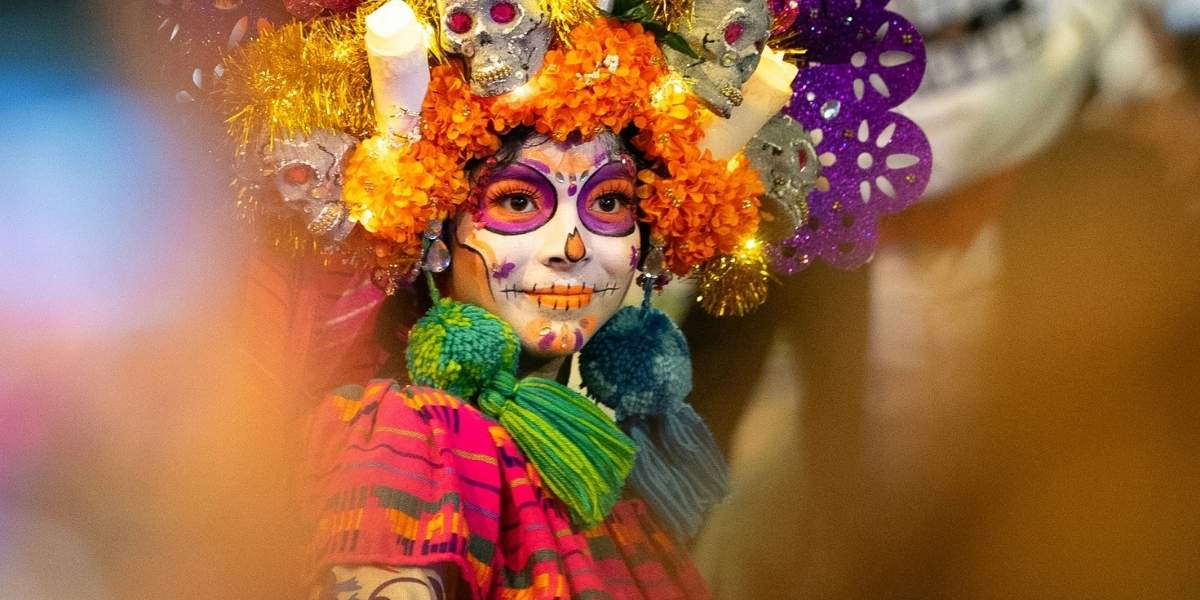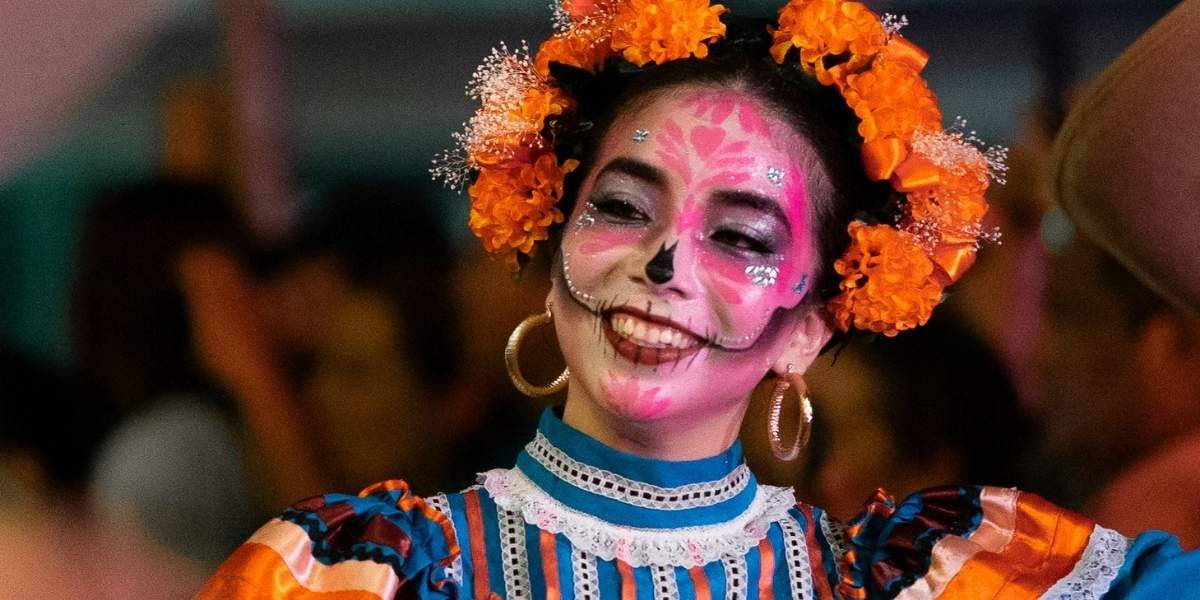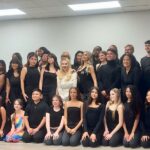Día de los Muertos in New York City isn’t a quiet affair. It doesn’t stay tucked inside private homes or museum corners, it spills into plazas, parks, breweries, and sidewalks. Altars glow under city lights, marigolds line subway stations, and the Mexican tradition of honoring ancestors through ofrendas, music, and memory takes on a distinctly New York rhythm: fast, expressive, and deeply communal.
From November 1–2, the city transforms into a living tribute. In Flatiron Plaza, a public ofrenda curated by Mano Mano Mexican Culture Without Borders invites passersby to reflect, contribute, and connect. It offers a moment of stillness in the middle of Manhattan’s rush and is part of a broader movement to bring heritage into shared spaces. Much like how live music is transforming NYC parades and celebrations, this installation blends tradition with performance, inviting spontaneous dance circles and acoustic sets that turn remembrance into celebration.
Art Installations and Altars That Speak Across Cultures
In Yonkers, Día de los Muertos takes on a tactile twist. “Ofrenda de Latas,” hosted by Yonkers Brewing Co., invites guests to decorate beer cans in tribute to loved ones. Each can becomes part of a candlelit altar before being taken home, a keepsake that merges craft, memory, and community. Proceeds support We Art One’s youth and senior programs, proving that cultural celebration can also be a vehicle for creative wellness.
Across boroughs, art institutions are leaning in. Wave Hill’s family-friendly programming includes nicho box crafting and bilingual storytelling, while the Children’s Museum of Manhattan offers hands-on workshops that introduce kids to the symbolism behind skulls, skeletons, and marigolds. These events reflect NYC’s layered approach to heritage, where education, art, and activism intersect. It’s a vibe that echoes the Puerto Rican Day Parade, another celebration that blends tradition with street-level pride.
Live Music, Face Paint, and the Soundtrack of Remembrance
Día de los Muertos in NYC doesn’t just honor the dead, it celebrates life through sound, rhythm, and color. Across boroughs, mariachi bands, Latin jazz ensembles, and DJ collectives turn altars into dance floors, blending tradition with street-level energy. In places like Bushwick, Harlem, and Jackson Heights, live music becomes the heartbeat of remembrance, drawing crowds into spontaneous performances that feel more like block parties than solemn rituals. It’s a sonic tribute that pulses with joy, memory, and cultural pride.
Face painting stations pop up alongside food vendors and art tables, offering intricate calavera designs that transform sidewalks into living canvases. Artists use bold lines, glitter, and floral motifs to reflect the vibrancy of the holiday, while participants of all ages wear their painted faces with pride. These moments of transformation are more than aesthetic, they’re acts of connection. In NYC, where identity is layered and fluid, face paint becomes a way to honor heritage while embracing the city’s multicultural spirit.
The soundtrack of Día de los Muertos in New York is as diverse as its people. Traditional ballads mix with reggaeton remixes, spoken word performances, and even punk covers of folkloric songs. Events often begin with candlelit processions and end with open-mic tributes, where community members share stories, poems, and memories. It’s this blend of old and new, solemn and celebratory, that defines the city’s approach, where music isn’t just background, but a central part of how remembrance is expressed, shared, and felt.
Where to Go and What to See
Día de los Muertos in NYC unfolds across boroughs, with each neighborhood offering its own take on the tradition. In Manhattan, the Flatiron Plaza ofrenda curated by Mano Mano Mexican Culture Without Borders is a standout. Open daily through November 2, it transforms a busy public space into a reflective altar filled with candles, marigolds, and community tributes. Visitors are encouraged to contribute photos, messages, and offerings, creating a living memorial that evolves throughout the week. It’s a rare moment of stillness in the city’s rush and a powerful reminder of how public art can hold space for memory.

In Yonkers, “Ofrenda de Latas” at Yonkers Brewing Co. offers a tactile, hands-on experience. Guests decorate beer cans in honor of loved ones, place them on a candlelit altar, and later take them home as keepsakes. The event doubles as a fundraiser for We Art One’s youth and senior programs, blending creativity with community support. It’s a fresh take on the traditional ofrenda, one that invites participation and personal storytelling. The brewery’s industrial setting adds a layer of contrast, turning remembrance into something raw, real, and deeply local.
Families looking for educational and interactive experiences can head to Wave Hill in the Bronx or the Children’s Museum of Manhattan. These institutions offer bilingual storytime, nicho box crafting, and workshops that explore the symbolism behind Día de los Muertos traditions. The programming is designed to be accessible and engaging, helping younger audiences connect with heritage through art and play. These events reflect NYC’s layered approach to cultural celebration, where education, activism, and creativity intersect in ways that feel both intentional and inclusive.
For those seeking nightlife energy, Latinx-owned venues across Brooklyn and Queens are hosting themed parties with traditional food, face painting, and live music. These events often start with candlelit altars and end with dance floors, blending reverence with rhythm. In NYC, cultural celebration doesn’t stop at sunset, it simply changes tempo. Whether honoring ancestors or discovering the tradition for the first time, there’s space to show up, participate, and feel connected.
Día de los Muertos in NYC Is a Living Tribute
Whether lighting a candle, painting a face, or dancing in the street, Día de los Muertos in NYC becomes more than a holiday, it’s a living, breathing tribute to memory, identity, and the city’s unstoppable creative pulse. It’s where tradition meets street culture, and where honoring the past becomes a full-body experience.
















